The name has always been misleading – the ‘cham’ part leads many people to assume that the bubbly liquid they are happily quaffing at parties is champagne, when in fact this popular drink is actually perry; alcoholic sparkling pear juice. This confusion actually led to a more serious altercation between the Babycham Company and the gourmand Raymond Postgate. The founder of the Good Food Guide, a once-a-year publication dedicated to searching out the best eateries in the UK, wrote an article in a 1965 edition of Holiday magazine claiming that his readers should know that Babycham looks and is served like champagne, but is actually a pear- based drink. Babycham sued Postgate for libel, stating that he had inferred that the company were trying to pass the drink off as something it wasn’t. Whilst the judge assigned to the case agreed that the wording was derogatory it was agreed that it could be passed as ‘fair comment’ and Postgate walked from court with no punishment. Largely remembered as a popular 1970s and 80’s drink, Babycham actually hit our shelves and bars in 1953 and had the honour of being the first booze to get a commercial aired on UK television. It almost single-handedly changed UK drinking culture by marketing itself directly at women, targeting them with their first specific ‘ladies’’ drink. Its history actually starts back in the 1940s, however. Shepton Mallet in Somerset was home to the brewery belonging to the Showering brothers (I promise there will be no jokes about how clean they must have been), Francis, Ralph, Herbert and Arthur. Alongside the normal beer they also produced mineral water and cider and Francis spent time searching for new drinks to bring to the market. He looked into the fermentation of fruit juice, originally to improve upon their cider-making process but as he researched the topic he discovered that he could also make a great tasting beverage from perry pears. After trying it out in the Bristol area as a test at first, their new alcoholic drink was bottled in 1950. It began its life in large bottles but was later swapped into the familiar small (‘baby’) ones that became its trademark. It was first sent out under the name of Champagne de la Poire but after winning first prize in every important agricultural show in the country people started referring to it as the ‘Baby Champ’. (See where they went from there?) The Showerings had hit upon a real gap in the market. Up until then the drinks aimed towards women were few; stout, port and lemon, gin or sherry perhaps? Showering’s new sparkling perry was an ideal creation to fill that gap. It could be marketed as a light, fun drink specifically for females – and the cute little deer logo, which appeared on the bottles for its launch in the UK in 1953, just added to that appeal. In 1957 it made its television commercial debut. It was an example of a truly aspirational brand; its strapline was ‘The genuine Champagne Perry’ and it was shown being drunk in saucer style champagne glasses by stylish and alluring women. The commercial was a success and Babycham’s popularity soared. The little Shepton Mallet brewery had to rapidly expand to keep up with increased demand; the campaign to introduce pear perry to a new (and obviously enthusiastic) audience had worked. The decades rolled by and the success story continued. The drink and the deer became world famous and the ‘Babycham Babe’ beauty competition was launched in the 1960s. The adverts gained a guest appearance from Patrick Mower (Emmerdale) in the 1970s and further references to the ultimate in cool lifestyles (‘Hey, I’d love a Babycham!’) in the 1980s. Later on the image of the deer was turned into a cartoon; it became a party deer, able to bring a bit of pizzazz to the dullest of social gatherings. By the 1990s though, the brand was losing ground. By now there were plenty of other cheap and ‘fun’ alcoholic brands on offer and a restriction on television alcohol advertising made it harder for the company to retain their status within the market. In 1993 the brand relaunched, aiming to target a more youthful consumer and a few years later there was a, possibly misguided, attempt to bring the ‘Babycham Babe’ contest back to life. (A West End final crowned model Nell McAndrew the winner in case you were curious.) The millennium saw a new ‘Popping Cork’ bottle added to the brand. Dogged determination meant that the name survived, and even began gaining in popularity again. The sudden fashion for retro enabled Babycham to become stylish again – even having a regular night held in its honour at Browns’ nightclub in Covent Garden, London. A range of clothing was launched in 2001; people could now celebrate their love of fizzy perry pear by wearing underwear, outer clothing and accessories adorned by the blue bow-wearing deer. These caught the eye of the fashion press and Babycham found itself receiving some positive media attention. A new range of shoes and matching bags came along in 2011. In 2003 Babycham celebrated 50 years of bubbly pear goodness and also began sponsoring the Funny Women Comedy Awards and ten years later Diamond Anniversary commemorative Babycham glasses could be snapped up with their special pack promotion. By 2011 Babycham was selling around 15 million bottles a year and two new flavours have been introduced, with an emphasis on its 1950’s heritage: ‘hint of cream soda’ and ‘hint of cherry soda’. Yum Yum.
FOOD & DRINK
Babycham
Author of this article:
Contributors to this article:
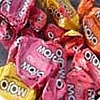


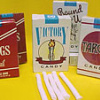
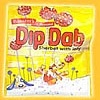

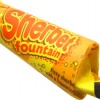
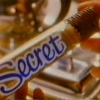
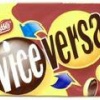
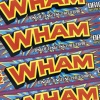
Do You Remember Babycham?
Do You Remember Babycham?